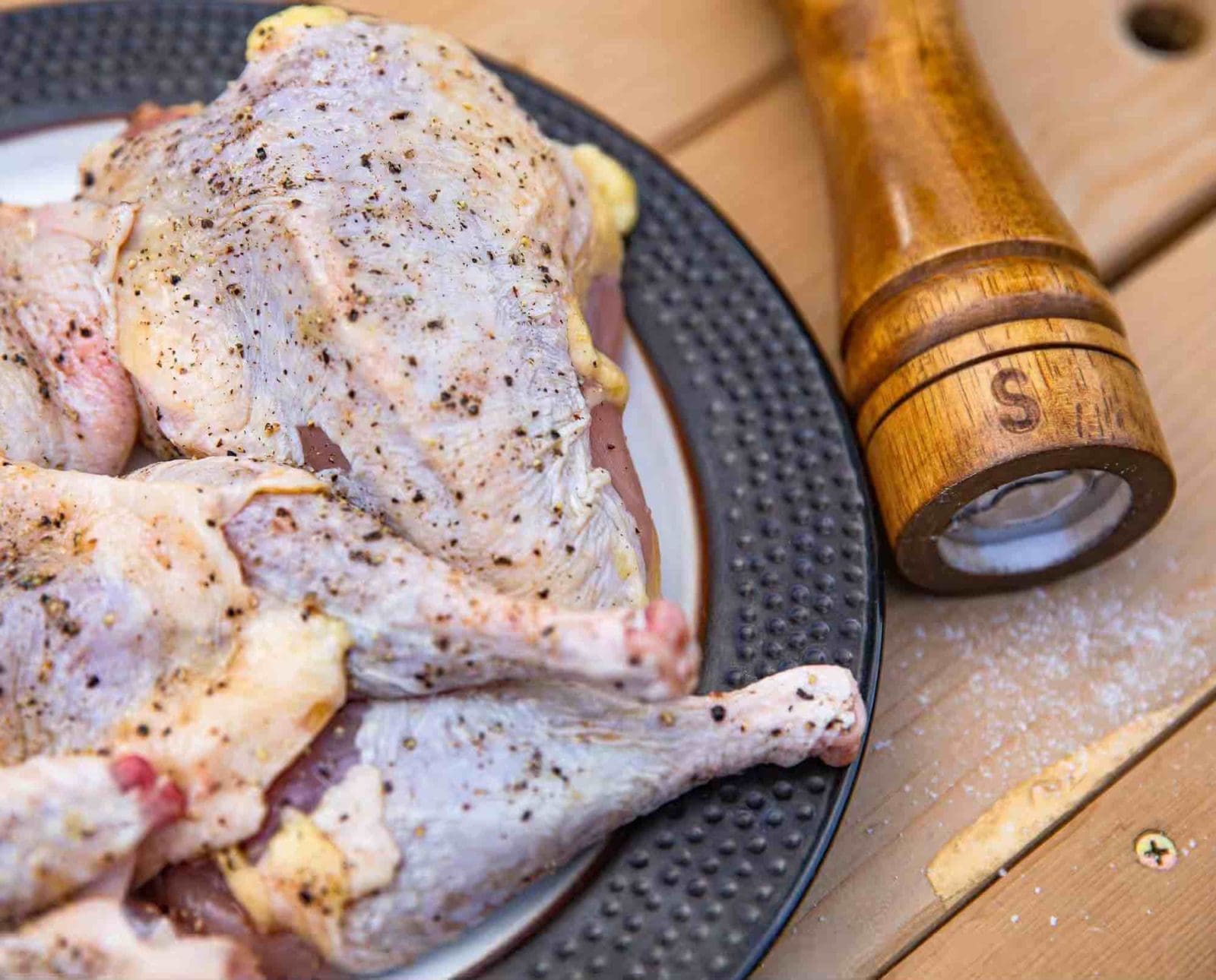Home » Small Game Cooking » Why Salt is Important for Cooking Game
Why Salt is Important for Cooking Game

Jack Hennessy grew up in the South Suburbs of Chicago…
Learn how salt should be used when cooking wild meat to enhance flavor and retain moisture
A year ago I covered a topic with which most of us are familiar: wet brining upland birds. Obviously salt is a crucial component of that process, but this mineral is very important for reasons other than retaining moisture while cooking. Think you know all the reasons why salt is important? Read on to find out.
Salt enhances flavor
Depending on who you ask, the human tongue perceives either four or five basic tastes: the well-established sweet, salty, sour, and bitter, alongside what some refer to as “umami,” which roughly translates from Japanese as “good flavor.” Umami, more or less, refers to “savory” or “meaty” flavor.
Salt reduces bitterness while also balancing sweetness and expanding the taste buds. It is basically the ambassador for your flavor palate, making sure everyone gets along and reaches their full potential.
Salt retains moisture
AmazingRibs.com is a fantastic resource for the technical aspects of grilling meat. Their science advisor Professor Greg Blonder explains it well: “Salt is made of sodium and chloride ions that carry electrical charges. These ions attack the proteins, causing them to unwind a bit, a process called denaturing. These altered proteins have a greater ability to retain water, so meat that has been treated with salt remains moister through the cooking process.”
While meat can lose upwards of 30 percent of its weight via moisture loss, properly brining proteins can reduce that percentage to as low as 15 percent, thus cutting moisture loss in half.
Dry brining with salt
Many chefs have long ago abandoned the concept of wet brining and swear only by dry brining, citing that it reduces space (no need for a big pot of water) and retains more flavor. Conversely, they suggest a wet brine can water down the taste.
How does dry brining work? It follows the same scientific principals listed above but the method is fairly simple: liberally cover all sides with kosher salt and allow meat to rest for a couple hours. During this time, the salt will draw out moisture from the meat, thus using the meat’s own juices to create somewhat of a brine. That moisture, along with the salt, gets reabsorbed into the meat. The salt binds to the muscle fibers and loosens them; this causes the fibers to contract less, preventing additional moisture from squeezing out.
For larger, whole birds, you may wish to liberally salt before allowing to sit in the fridge, uncovered, overnight. For individual cuts, a dry brine of a couple hours should suffice.
Types of salt
Table salt: Highly refined with anti-caking agents, table salt is almost pure sodium chloride. It can sometimes contain iodine as a form of dietary supplement. As the name suggests, it belongs on the table where, if food tastes bland, you can add to enhance flavor.
Sea salt: Made by evaporating seawater, sea salt is also mostly just sodium chloride, but also contains small traces of other minerals. The coarse texture adds a different mouth feel when added upon serving a meal.
Himalayan pink salt: This salt often contains traces of iron oxide (rust), which gives it a pink color. It also contains small amounts of calcium, iron, potassium, and magnesium, making it slightly lower in sodium than other salts.
Kosher salt: With its large, flaky texture, Kosher salt is usually the most popular option for cooking. The flaky texture allows it to easily dissolve in food.
Pickling / canning salt: Pickling salt contains iodine and anti-caking additives, dissolves easily in cold water, and is a great choice for brines.
Curing salt: Used for preserving meat such as jerky or bacon, curing salt shouldn’t be used in cooking.
Salt to taste
This is likely the most misunderstood—yet crucial—phrase in cooking. What it actually means: “Food should not taste salty, but rather should reach its flavor potential via adding salt.”
Whether making a stew or adding the finishing touches to a cut of grilled game, add salt slowly and taste-test as you go. If it’s bland, add a pinch more, but never overdo it.
When I worked at The Elk Public House, our kitchen manager liked to say that, compared to other restaurants in town, our food tasted better due to our secret spice. “Don’t go around revealing our secret spice,” he’d say. What was that secret spice? Salt. But more importantly, it was knowledge about how to use salt properly.
Jack Hennessy grew up in the South Suburbs of Chicago and didn't start hunting until he attended graduate school in Spokane, Washington, at the age of 26. Hennessy began work in professional kitchens in high school but didn't start writing wild game recipes until he joined the Spokesman-Review in 2014. Since then, his recipes have appeared with Petersen's Hunting, Backcountry Journal, Gun Dog Magazine, among many others. He now lives with his Wirehaired Vizsla, Dudley, in Wichita, Kansas.




I used to live across the street from The Porch (and frequented The Elk upon occasion) and can attest to the fact that properly applied salt can indeed be a game changer-as evidenced by the excellent dishes served at both establishments!
Great article!